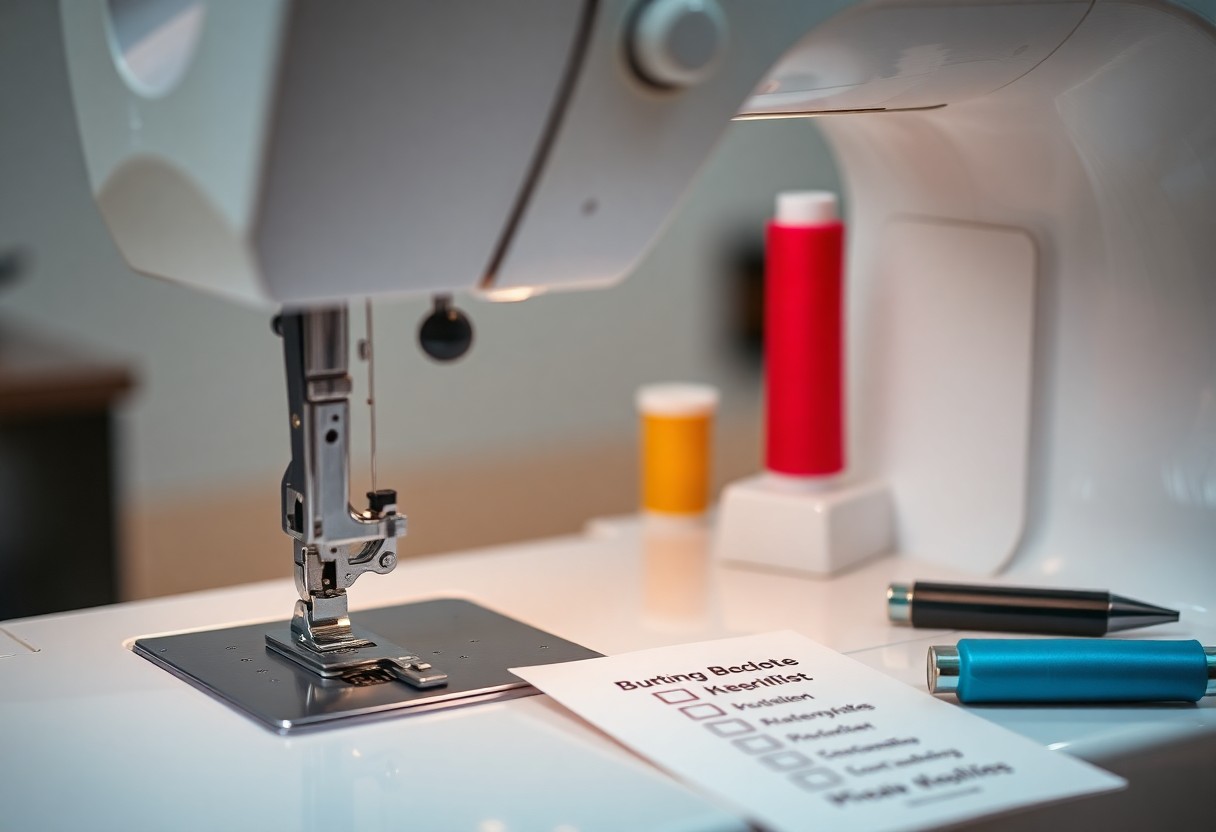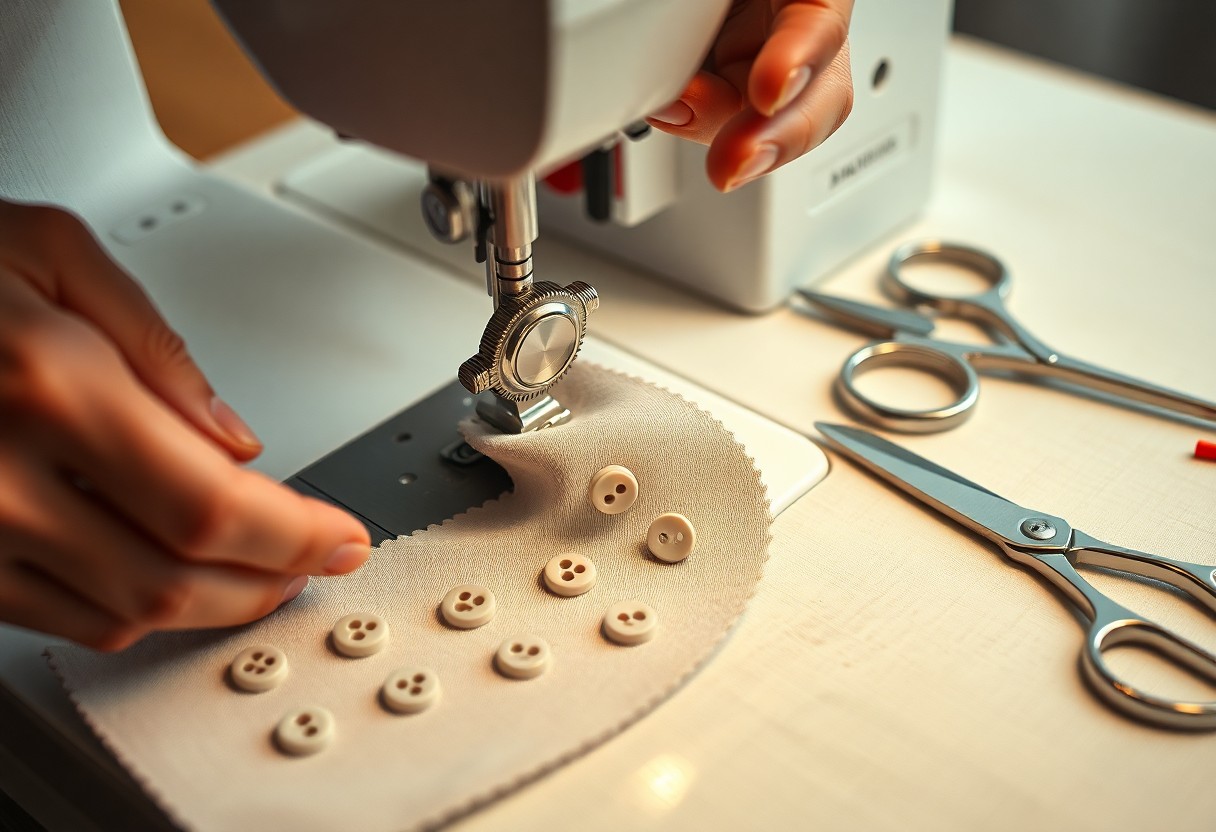Troubleshooting buttonholes can be frustrating, but with the right techniques, you can achieve flawless results every time. Understanding the common challenges, such as fabric type and thread tension, is important for perfecting your buttonholes. By following expert tips and knowing how to adjust your sewing machine settings, you can mitigate common issues like uneven stitching or fabric puckering. Elevate your sewing projects and ensure your buttonholes look professional with these simple yet effective strategies!
Unlocking the Secrets of Ideal Buttonhole Settings
Achieving perfect buttonholes relies on understanding your machine’s settings. Each fabric type demands specific adjustments, so familiarize yourself with your sewing machine’s features. Test different settings until you discover the optimal combination of stitch length, width, and tension tailored to your fabric, ensuring that every buttonhole is not only functional but also aesthetically pleasing.
Mastering Stitch Length and Tension
Stitch length and tension significantly impact the appearance and durability of your buttonholes. A general rule is to use a shorter stitch length for sturdier fabrics and slightly longer for delicate materials. Adjust tension based on the thickness of the fabric; tighter tension prevents puckering, while looser tension allows for better flexibility in softer fabrics.
The Art of Choosing the Right Foot
Choosing the correct presser foot can dramatically enhance your buttonhole results. Standard buttonhole feet offer precision while some machines come equipped with specialized options for different styles. For example, a foot that accommodates varied fabric thicknesses ensures a smoother feed and consistent stitching. Utilizing the right foot not only streamlines your sewing process but also contributes to cleaner, more professional-looking buttonholes.
Common Buttonhole Pitfalls and How to Avoid Them
Even seasoned sewists encounter common buttonhole issues that can derail your project. By identifying these pitfalls early, you can correct them and achieve the perfect buttonhole every time. Look out for uneven stitching, gaping buttonholes, and misaligned fabrics—recognizing and addressing these problems will save time and ensure a polished finish on your garments.
Troubling Uneven Stitching
Uneven stitching often arises from improper tension settings or fabric manipulation during the sewing process. You should check your sewing machine tension and adjust it according to the fabric thickness. Using a stabilizer can also help maintain straight stitches and prevent any puckering, leading to clean, uniform buttonholes.
The Irritating Problem of Buttonhole Gaping
Buttonhole gaping happens when the buttonhole is too loose, allowing it to pull away from the fabric when the button is inserted. This issue can stem from inaccurate measurements or the use of inappropriate buttonhole styles for your fabric type. It’s important to accurately measure your buttons and select a buttonhole style that complements the fabric’s weight and stretch, ensuring a snug fit.
A gaping buttonhole significantly detracts from the overall appearance of your garment. To prevent this, accurately measure the buttonhole length based on your button size, adding slight allowances for thicker fabrics. Additionally, using a smaller stitch length can reinforce the edges, keeping the buttonhole more secure and preventing unwanted gaps. Regularly test your buttonhole settings on scrap fabric before committing to your final project to perfect the fit.

Fine-Tuning Your Machine for Seamless Results
Achieving perfect buttonholes involves precise adjustments to your sewing machine. Fine-tuning settings such as stitch length, width, and tension is imperative for consistently seamless buttonholes. Familiarize yourself with your machine’s manual to adjust these parameters, ensuring smooth operation during the buttonhole process. Testing on scraps allows you to refine your settings until achieving the desired outcome. The alignment and setup of your machine directly affect the quality of your buttonholes, so take time to get it just right.
Calibrating Your Buttonhole Settings
Calibrating your buttonhole settings involves adjusting the width and length specific to your fabric type. Choosing the right buttonhole mode on your machine is equally important, as different fabrics require different settings for optimal results. Experimenting with different stitch types can also enhance the look of your buttonholes. Keep track of your settings for future projects to save time. The goal is consistent, professional results every time you sew.
Maintaining Your Sewing Machine: Essential Tips
Regular maintenance of your sewing machine significantly influences buttonhole quality. Cleaning lint buildup from the bobbin area and feed dogs prevents jams and uneven stitches. Oiling moving parts as indicated in your manual ensures your machine runs smoothly, leading to better buttonhole execution. Schedule routine inspections to replace worn parts and keep your machine in top condition. The longevity of your machine directly correlates with your ability to achieve perfect buttonholes.
- Cleaning lint buildup from the bobbin area.
- Oiling moving parts as per the manual.
- Replacing worn parts during routine inspections.
- Saving time on troubleshooting due to proper upkeep.
Establishing a consistent maintenance routine extends your machine’s lifespan and dramatically improves your sewing experience. Prioritize cleaning your machine after every few projects and keep a log of any adjustments or repairs. This gives you a clearer picture of maintenance history and helps track performance over time. The result of proper care is not just functionality; it’s the ability to produce perfect buttonholes reliably.
- Establishing a consistent maintenance routine.
- Cleaning after every few projects.
- Tracking adjustments or repairs for future reference.
- Improving the quality of results through diligent care.
The Role of Fabric Choice in Buttonhole Success
Your choice of fabric can significantly influence the outcome of your buttonholes. Fabrics vary greatly in terms of weight, texture, and stretch, which all affect how well the buttonhole will sew and function. For instance, lighter fabrics may fray easily, while thicker fabrics require proper stabilizing techniques. Understanding these nuances allows you to select a material that works harmoniously with your sewing machine and buttonhole technique, ultimately leading to successful buttonhole creation.
Understanding Fabric Behaviors
Differing fabrics react uniquely under sewing conditions. Woven fabrics, such as cotton, generally hold a sharp edge when cut, making them ideal for clean buttonholes. In contrast, knits can stretch and distort, necessitating special considerations like stabilizers to maintain the shape of your buttonholes. Observing how your fabric behaves will guide you in determining the best approach for achieving precise results.
Preparing Fabric for Best Results
Properly preparing your fabric before sewing buttonholes ensures optimal performance. Start by washing and pre-shrinking your fabric, as this prevents future alterations that can compromise your buttonholes’ integrity. Press the fabric to eliminate wrinkles, then use interfacing to provide additional structure and support.
Washing your fabric removes any sizing or chemicals that may affect sewing, while pressing creates a smooth, uniform surface, aiding in accurate cutting and stitching. Using interfacing adds strength, especially for lightweight or stretchy fabrics, preventing the edges from curling or distorting. For knits, consider using a cut-away stabilizer to support the fabric during the buttonhole process. Implementing these steps ensures that your fabric is ready to yield the best buttonhole results possible.

Troubleshooting Techniques: A Step-by-Step Guide
| Issue | Solution |
|---|---|
| Uneven Stitching | Recheck thread tension and make adjustments as needed. |
| Fabric Bunching | Ensure the fabric moves smoothly under the presser foot. |
| Skipped Stitches | Change the needle to match your fabric type. |
| Buttonhole Misalignment | Use a template to mark exact placement on your fabric. |
Diagnosing and Fixing Common Issues
When facing buttonhole challenges, first identify the specific problem. If stitches are uneven, adjust the thread tension. For fabric bunching, ensure it’s feeding evenly under the presser foot. Skipped stitches might indicate a need for a new needle, while misalignment often stems from improper marking. Regular maintenance of your machine helps prevent these issues from arising.
Testing and Practicing for Perfection
The path to mastering buttonholes involves consistent practice. Create a series of test buttonholes on scrap fabric to evaluate settings, tensions, and techniques. Adjust your machine for various fabric types, noting that thicker materials may require different settings than lightweight fabrics. This practice helps you become familiar with your machine’s capabilities and prepares you for real projects.
Testing various fabrics and techniques builds your confidence and skill level. Use a variety of materials—like cotton, silk, and denim—each presenting unique challenges. After executing buttonholes on these, assess them closely. Take notes on what worked and what didn’t. This iterative process not only reveals your machine’s quirks but also engrains best practices in your memory, ensuring flawless buttonholes on future projects.
Summing up
Ultimately, mastering buttonhole troubleshooting ensures you achieve perfect buttonholes every time. By understanding your machine’s settings, selecting the right thread and fabric, and practicing your technique, you can avoid common pitfalls. Pay attention to tension and stitch length adjustments for optimal results. With these tips, your buttonholes will not only function well but also enhance the overall quality of your sewing projects.
FAQ
Q: What should I do if my fabric puckers while sewing buttonholes?
A: Puckering can occur due to uneven tension or the wrong presser foot. Check the tension settings on your sewing machine, and ensure you are using the appropriate buttonhole foot designed for your machine. Additionally, stabilizing the fabric with interfacing can help reduce puckering.
Q: How can I ensure that my buttonholes are the correct size?
A: Measure the button you plan to use and adjust the buttonhole setting accordingly. Most machines have adjustable settings for different button sizes. Use a sample fabric to test the buttonhole size before sewing on the final garment.
Q: What causes my sewing machine to skip stitches when making buttonholes?
A: Skipped stitches may result from using the wrong needle type or size for your fabric. Ensure you are using a sharp needle suitable for your fabric type. Cleaning the machine and checking the foot pressure can also help eliminate skipped stitches.
